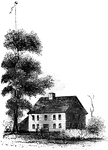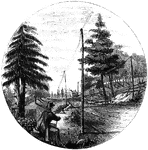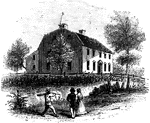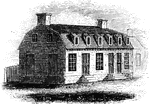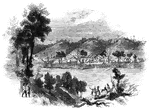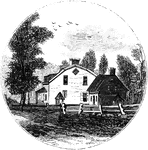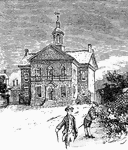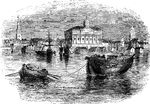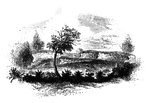The 1763-1788 American Revolution Places ClipArt gallery provides 303 illustrations of the Apollo Room, Carpenter's Hall, Concord, Faneuil Hall, Mount Vernon, the Old South Meeting House, and other locations associated with the American War for Independence.

Agnew and Erskine
Head-quarters of Agnew and Erskine. This house is on the south bank of Still River, at the north end…

Apollo Room
"The Apollo Room. The room used for public meetings is in the rear building of the old Raleigh tavern…

Arnold Landing-place
"View of the landing-place of Arnold. This sketch is from the west side of the cove in which the troops…

Arnold Wounded
Place where Arnold was wounded. This view is in a narrow alley near the north end of Sault au Matelot…

Arnold's Battle
Scene of Arnold's naval battle. This sketch was made from the pilot's room of the steam-boat just after…

Arnold's residence
Arnold's residence. Arnold lived in Water Street, near the ship-yard. The house is still standing (1848),…
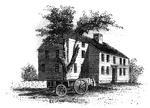
Barrett's House
"Colonel Barrett's House. This sketch is from the road leading to the village of Concord by the way…

Battle-ground
This view is taken from near the house of Mr. Neilson, looking northwest. In the foreground, on the…

Battleground near Fort Anne
Battleground near Fort Anne. This sketch was taken from the rail-road, looking north. The forest upon…

Beloeil Mountain
Beloeil Mountain, this sketch is taken from the southeast angle of old Fort chambly, showing the rapids…

Bennington Battle-ground
The Bennington battle-ground. This view is from the hill on the southwest bank of the Walloomscoick,…

Beverly Dock
"View at Beverly Dock. This view is taken from the Hudson River rail-road, looking north. The dock,…
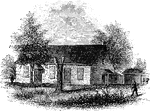
Birmingham Meeting-House
"Birmingham Meeting-house. This is a view of the southerly front of the meeting-house. The building…
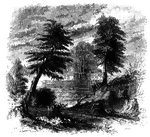
Bloody Pond
Bloody Pond. Tradition avers that for many years its waters bore a bloody hue, and it has ever since…
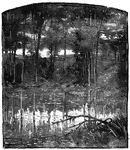
Bloody Pond
"Bloody Pond, near Lake George, which is said to still contain the bones of many of those who fell in…
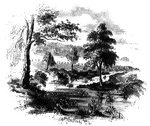
Bloody Run
Bloody Run, a stream which comes leaping in sparkling cascades from the hills, and affords fine trout…

Boone's Fort
"Boone's Fort. This sketch is from a drawing by Colonel Henderson, and published in Collin's Historical…

Boone's Fort
Daniel Boone blazed the Wilderness Trail into central Kentucky and built Fort Boone, soon renamed Boonesborough.

Boston
"View of Boston from Dorchester Heights in 1774. This picture is from an English print of the time.…
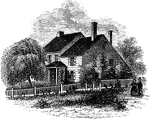
Washington's Headquarters at Brandywine
The home in which General Washington used for his headquarters on the eve of the Battle of Brandywine.…

Breakfast Room
"The Breakfast Room. This is a view of the room in the Robinson House in which Arnold was at breakfast…
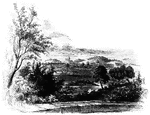
British Surrender
View of the place where the British laid down their arms. The sketch here presented, of the place where…
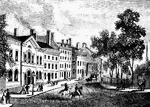
Broadway
"View at the foot of Broadway. General Charles Lee's troops marched to New York."—Lossing, 1851

Bronx
"Place where the British crossed the Bronx. This view is from the southeastern side of the Bronx, a…

Brower's Mill
"Brower's Mill. This is a view of the old mill of the Revolution, as it appeared when I made the sketch…

Buckley House
The Buckley House. This building stood upon the eastern side of the Green, fronting the church. It was…

Bunker Hill After the Battle
"This picture was drawn by a British engineer a few days after the battle. The view is from the north…

Butler House
The Butler House. John Butler was one of the leading Tories of Tyron county during the whole war of…
Butt's Hill, Looking South
"The view is taken from the American intrenchments on Butt's Hill. he windmill is on Quaker Hill. The…
View Looking North from Butt's Hill
"The view shows the intrenchments in the foreground. The Americans retreated past the houses in the…

Campbell Mansion
Mansion of Judge Campbell. This pleasant dwelling is upon the northern verge of the town, on the road…
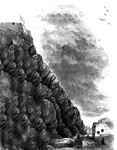
Cape Diamond
Cape Diamond, this is a view of the spot where Montgomery was killed. The cliff is Cape Diamond, crowned…
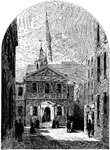
Outside View of Carpenter's Hall
An illustration of Carpenter's Hall in Philadelphia, where the First Continental Congress assembled.
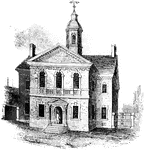
Carpenters' Hall
"Carpenters' Hall. This building is constructed of small imported bricks, each alternate one glazed,…
Cascades
The Cascades, on St. Ann's Rapids. These rapids are so called from the cirumstance that a village of…
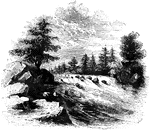
Catawba
"View of the Great Falls of the Catawba. This view is from the west side of the Catawba, looking northeast,…

Caughnawaga Church
Caughnawaga church. This old church, now (1848) known as the Fonda Academy, under the management…
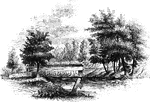
Chad's Ford
"View at Chad's Ford. This view is from the east bank of the Brandywine, looking southwest. The ford…
Charlestown
"Charlestown in 1775. No. 1 is Bunker Hill; 2, Breed's Hill; 3, Moulton's Point; 4, a causeway near…

Burning of Charlestown
"This picture was drawn by a British engineer at the time of the battle. The view is from Copp's Hill,…
Heights of Charlestown
"A profile view of the Heights of Charlestown, in the American Revolution."—E. Benjamin Andrews,…

Chatterton's Hill
"Chatterton's Hill, from the rail-way station. This is a view of the southeastern side of Chatterton's…

Chatterton's Hill, From the Railway Station
While Washington was inspecting the terrain, seeing where it was best to station his troops, he ran…

Cherokee Ford
"View at the Cherokee Ford. This view is from the east bank of the river. Toward the extreme right is…
![Distant view of Cherry Valley. Cherry Valley derived is name, according to Campbell, from the following circumstance: "Mr. Dunlop [the venerable pastor whose family suffered at the time of the massacre in 1778], engaged in writing some letters, inquired of Mr. Lindesay [the original proprietor of the soil] where he should date them, who proposed the name of a town in Scotland. Mr. Dunlop, pointing to the fine wild cherry-trees and to the valley, replied, 'Let us give our place an appropriate name, and call it Cherry Valley,' which was readily agreed to."](https://etc.usf.edu/clipart/13400/13460/cherry-vall_13460_mth.gif)
Cherry Valley
Distant view of Cherry Valley. Cherry Valley derived is name, according to Campbell, from the following…
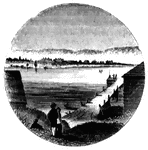
Chimney Point
Chimney Point Landing. This view is taken from the green in front of the inn at Chimney Point, looking…

Old North Church
The famous church in Boston, Massachusetts where the line "one if by land, and two if by sea" signal…
